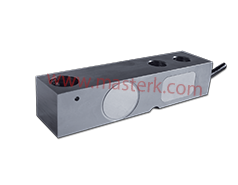What is a shear beam load cell and how does it operate ?
Shear beam load cell represents an essential advancement in the field of weight measurement technology. Known for its precision, reliability, and stability, this load cell plays a critical role in various industries where accurate weight measurements are paramount.
Indeed, shear beam load cell is specialized device designed to accurately measure force or load by utilizing the principles of shear strain. This type of load cell typically features a rectangular-shaped body with strain gauges positioned to detect changes in shear stress when a force is applied. Moreover, the design allows for excellent sensitivity and stability, making shear beam load cell suitable for a wide range of applications.
Here is how this type of sensor works, accompanied by important mounting precautions:
1. **Sensitive Element:** The sensitive element of a shear load cell is often a flat structure, such as a beam or beam, capable of undergoing deformation in response to lateral forces.
2.**Application of the Load:** The force applied to the object to be weighed generates a shear stress on the sensitive element of the sensor. This stress causes deformation of the element.
3.**Strain Detection:** Strain gauges are attached to specific locations on the sensing element. These gauges measure the resulting deformation when a lateral force is applied.
4.**Resistance Variation:** Deformation causes changes in the electrical resistance of strain gauges. This variation is proportional to the shear force applied.
5.**Force Measurement:** A measuring device converts resistance changes into a shear force value, which can then be converted to weight.
**Mounting Precautions:**
1.**Precise Alignment:** Ensure that the object being weighed exerts a direct lateral force to avoid unwanted force components.
2.**Robust Fixation:** Securely fix the sensor and the object to prevent any movement which could alter the measurements.
3.**Avoid Axial Forces:** Minimize axial forces to avoid distorting shear results.
4.**Overload Protection:** Provide overload protection mechanisms to avoid damage to the sensor.
5.**Controlled Environment:** Protect the sensor from extreme environmental conditions, such as humidity and corrosion, which could impair its performance.
6.**Regular Calibration:** Perform regular calibrations to maintain measurement accuracy, taking into account specific mounting conditions.
In conclusion, a shear load cell detects deformation resulting from lateral forces to measure the weight of an object. Careful assembly precautions are essential to ensure accurate and reliable measurements.
It stands as a testament to technological innovation in the field of weight measurement. Its precision, durability, and stability make them an indispensable tool across diverse industries, contributing to improved efficiency, accuracy, and quality in processes that rely on precise weight data.
------------------------------------------------------------------------------------------------------------------------------------
Main general characteristics of the shear load cell:
- Sensor made of stainless steel.
- IP67 protection rating.
- Approved up to 3,000 d OIML R60.
- Current aligned signal for multi-sensor use.
- It finds multiple applications in a very wide range of load receivers, pallet scales, overhead scales, hopper scales and any industrial weighing process.
Electrical characteristics of the shear sensor:
- Supply voltage range : 1 to 15 V
- Rated sensitivity: 2 mV/V
- Initial zero range : ±10% of rated load (Cn)
- Input impedance (resistance): 385 ±20Ω
- Output impedance (resistance): 350 ± 5Ω
- Insulation resistance: 2000 MΩ /50
Mechanical characteristics of the sensor:
- Allowable mechanical overload: 150% Emax
- Compensated temperature range: -10 … +40 C°
- Degree of protection: IP68 according to EN 60529
- Operating temperature range: -20 … +60 C°
- Material: Stainless steel
- Cable length: 5 meters
- Sensor net weight: 0.9 to 1.7 kg
-
More




